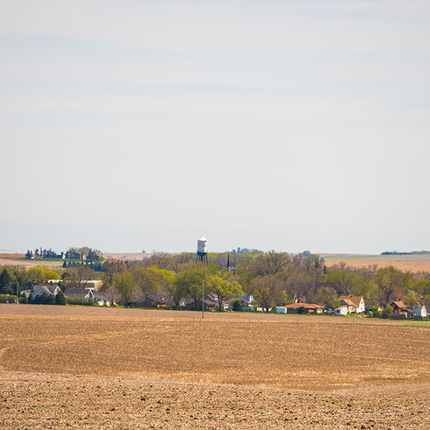Update Feb. 21, 2023: An updated series on pipelines has been published on our blog. 1) Lawmakers in Iowa, South Dakota introduce pipeline legislation 2) Who regulates carbon pipelines? 3) to be published Feb. 27
By Nick Summers, former staff member
Pipeline proposals can be contentious when economic, environmental, and landowner interests are at odds. With three proposed pipelines intended to facilitate carbon capture and storage across the upper Midwest, it is important there is an understanding of the facts, as well as the relevant questions and concerns surrounding the projects.
Proposed to cross six states (from Minnesota, South Dakota, Iowa and Nebraska to Illinois and North Dakota), the pipelines would transport carbon dioxide captured from the emissions of ethanol plants and other similar facilities, before being stored deep underground in Illinois and North Dakota. The Midwest Carbon Express, proposed by Alden, Iowa-based Summit Carbon Solutions, and Heartland Greenway by Navigator CO2 Ventures, a Dallas, Texas-based company, will have the ability to reduce annual carbon emissions by 12 and 15 million tons of CO2 respectively, the equivalent of taking 2.6 and 3.2 million cars off the road, according to company officials. A third pipeline proposed by Archer-Daniels-Midland Co., a company headquartered in Chicago, Illinois, and Wolf Carbon Solutions, an affiliate of Wolf Midstream, a company out of Calgary, Alberta, would capture emissions from ADM’s facilities in Clinton County and Cedar Rapids in Iowa and store it at their existing storage site in Decatur, Illinois. A joint news release between the companies states that this pipeline would sequester 12 million tons of carbon emissions annually.
The ethanol industry offers a market to approximately 40 percent of corn produced in the U.S., according to the United States Department of Agriculture’s Economic Research Service, as well as jobs in the communities where ethanol plants are located, while providing state and local tax revenue. While recognizing the role the ethanol industry plays in the economic prosperity of many rural communities, there are still questions about the lasting benefits of these pipelines, the environmental consequences, and their lasting impact on rural communities.
Is carbon capture and storage effective at reducing carbon emissions?
The effectiveness of carbon capture and storage systems at reducing carbon dioxide is in question because the process of capturing, transporting, and storing carbon, as well as constructing the infrastructure required to run a system all produce carbon emissions. The emissions generated through this process can significantly offset the carbon captured, according to Dr. Mark Jacobsen, director of the atmosphere/energy program and professor of civil and environmental engineering at Stanford University.
Will eminent domain authority be used?
Among concerns raised by rural landowners during a recent public meeting hosted by Summit Carbon Solutions in Boone, Iowa is whether eminent domain authority would be used to obtain the land necessary for constructing and operating the pipelines. The company affirmed its desire to negotiate as many voluntary easements as possible and would not speculate on the extent to which eminent domain authority will be used or if they would request it.
Can carbon dioxide be safely stored underground indefinitely?
Carbon dioxide can be stored underground when done correctly, according to a report by the International Energy Agency’s Greenhouse Gas R&D Programme. But, there are concerns about the negative effects stored carbon dioxide can have on the geology of the storage site and the surrounding water quality when proper precautions are not taken, according to the Intergovernmental Panel on Climate Change’s report on carbon capture and storage.
At the public informational meeting in Boone, Summit Carbon Solutions told local landowners the storage site in North Dakota was safe and sufficient for permanent storage, but the site will require long term monitoring to ensure there is no environmental degradation or risks to public health and safety.
How will these projects make money?
Some final questions that remain are how the projects will be structured financially and how they will contribute to the longevity of the ethanol industry. The pipelines will be privately funded, but Summit Carbon Solutions said during the public meeting they will obtain the 45Q federal tax credit, a tax credit designed to incentivize investment in carbon capture and storage technologies, once operational. The company has negotiated agreements that allow them to share in the financial benefits the ethanol plants will get from entering markets that have standards for emissions generated from fuel sources. For example, California requires all fuel sold in the state to meet its Low Carbon Fuel Standard, so the ethanol plants need the emissions reductions from the pipeline to enter the market. The pipeline allows these ethanol plants to lower their Carbon Intensity Score, which quantifies the amount of carbon emitted over the life cycle of the process, and sell to consumers in California.
While short-term economic benefits that a stronger ethanol industry offers to rural communities in the Midwest are clear, the long-term economic and environmental consequences remain unknown.
Feature photo by Kylie Kai





